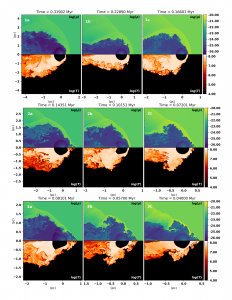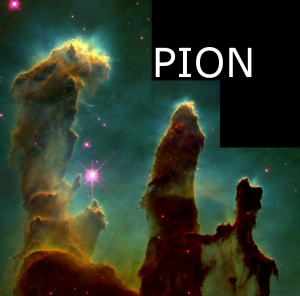 PION is a grid-based fluid dynamics code for hydrodynamics and magnetohydrodynamics, including a ray-tracing module for calculating the attenuation of radiation from point sources of ionizing photons. It also has a module for coupling fluid dynamics and the radiation field to microphysical processes such as heating/cooling and ionization/recombination. The first public release of PION, version 2.0.0, is described in Mackey et al. (2021, MNRAS), and has the ASCL reference
PION is a grid-based fluid dynamics code for hydrodynamics and magnetohydrodynamics, including a ray-tracing module for calculating the attenuation of radiation from point sources of ionizing photons. It also has a module for coupling fluid dynamics and the radiation field to microphysical processes such as heating/cooling and ionization/recombination. The first public release of PION, version 2.0.0, is described in Mackey et al. (2021, MNRAS), and has the ASCL reference 
PION was written to model the evolution of HII regions, photoionized bubbles that form around hot stars, and developed to include stellar wind sources so that both wind bubbles and photoionized bubbles can be simulated at the same time. It is versatile enough to be extended to other applications.
PION originated as a radiation-hydrodynamics code for simulating photoionized nebulae around massive stars, developed as part of J. Mackey’s PhD at DIAS from 2006 to 2010. It was developed further to model stellar-wind bubbles around evolving stars from 2010-2015 in Germany at the University of Bonn and University of Cologne.
PION is free software with a BSD 3-Clause license. This grants you certain rights and imposes some (but not many) restrictions on what you can do with the source code. Please read the license because using the code is an implicit acceptance of the license conditions.
Funding for research projects involving development work and running simulations has been provided by:
- The Irish Research Council (formerly IRCSET)
- The Alexander von Humboldt Foundation
- The Deutsche Forschungsgemeinschaft (DFG) through the SPP 1573: Physics of the ISM
- Science Foundation Ireland (SFI)
Computational resources and support have been provided by:
- The Irish Centre for High-End Computing
- The Jülich Supercomputing Centre
- The Leibniz Supercomputing Centre
